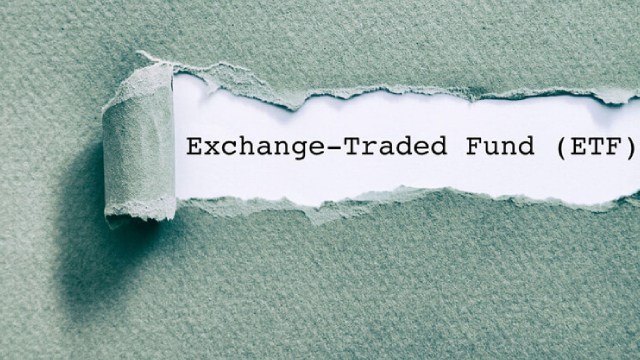
Vanguard Growth ETF (VUG)

Should Vanguard Growth ETF (VUG) Be on Your Investing Radar?
Designed to provide broad exposure to the Large Cap Growth segment of the US equity market, the Vanguard Growth ETF (VUG) is a passively managed exchange traded fund launched on January 26, 2004.

VUG: It Isn't A Bubble, But A Solid Secular Growth Trend
The S&P 500's rally is not a bubble but a secular growth trend fueled by strong earnings, especially from mega-cap tech stocks. AI-driven innovation and robust earnings from tech giants like Microsoft, Alphabet, and Meta are powering market gains and supporting further upside. Valuations remain reasonable, economic growth is solid, and potential rate cuts reduce the risk of a major selloff in the near term.

VUG: Buy For The Bubble
Growth stocks have regained leadership with VUG outperforming after a significant correction, and the AI megatrend is driving further upside potential. VUG offers efficient, low-cost exposure to mega-cap growth, with robust earnings growth and a strong tech focus supporting its investment case. Fed rate cuts are likely to provide additional tailwinds for growth stocks, potentially fueling a bubble reminiscent of the late 1990s.

Should Vanguard Growth ETF (VUG) Be on Your Investing Radar?
Launched on 01/26/2004, the Vanguard Growth ETF (VUG) is a passively managed exchange traded fund designed to provide a broad exposure to the Large Cap Growth segment of the US equity market.

VUG: Why The Long-Term Case Still Favors Value
U.S. Large Cap Growth, as represented by VUG, has underperformed Value over the long term in both total return and risk-adjusted metrics. VUG's concentrated exposure to mega-cap tech increases volatility, drawdown risk, and structural fragility compared to broader ETFs like VOO or VTV. Historical data shows Value's outperformance is more consistent and durable, while Growth's leadership is cyclical and prone to sharp reversals.

VUG: How Vanguard's Growth ETF Works And How It Stacks Up Against The Competition
The Vanguard Growth ETF offers efficient access to the large-cap growth segment of the U.S. stock market. Its ER is 0.04% and the fund has nearly $300B in assets across all share classes. VUG is designed for investors with an above-average tolerance for risk and capital appreciation as their primary investment objectives. This article walks readers through its unique selection process. Like many peers, VUG is concentrated at the company and sector levels, with 57% in Technology. I provide a downloadable Excel Workbook that allows readers to compare 65 ETFs.

Should Vanguard Growth ETF (VUG) Be on Your Investing Radar?
Designed to provide broad exposure to the Large Cap Growth segment of the US equity market, the Vanguard Growth ETF (VUG) is a passively managed exchange traded fund launched on 01/26/2004.

VUG: Large Cap Growth Can Hit New Highs In 2025 With More Upside Ahead
Tech, communication, and consumer cyclical sectors drive robust fundamentals for growth stocks, with financials, health care, and industrials adding further upside potential. Recent market selloff has made forward valuations attractive, presenting a compelling entry point for large cap growth ETFs like Vanguard Growth ETF (VUG). VUG stands out due to its strong tech exposure, high liquidity, low expense ratio, and diversified holdings, outperforming the S&P 500 over multiple timeframes.

VUG: A Passive Play On Tech's Continued Growth
VUG tracks the CRSP US Large Cap Growth Index, heavily weighted toward tech and consumer discretionary, making it suitable for long-term capital growth. Positive outlook on tech, particularly AI and digital transformation, ensuring strong demand and innovation in the next 2-3 years. VUG's heavy concentration in top holdings leads to high correlation, but it adjusts passively over time, making it viable for long-term investors.

Is Investing $50,000 Into This Top Vanguard Fund a Surefire Way to Get to $1 Million by Retirement?
Investing a large lump sum today into a diversified exchange-traded fund (ETF) and simply holding on to it can be a great way to grow your portfolio over the long term. Historically, stocks have risen in value, and the S&P 500 has averaged an annual return of around 10% per year.

VUG vs. QQQ: Which Growth ETF Will Lead Your Portfolio in 2025?
The Vanguard Growth ETF (VUG) and the Invesco QQQ Trust (QQQ) feature similar dividend yields and historical price performance.

When Will the Ultra-Low-Cost Vanguard Growth ETF Return to Its Previous Highs?
Over the past decade-plus, growth stocks have been largely responsible for leading the major U.S. stock market indexes to new heights. Growth-driven exchange-traded funds (ETFs) -- like the Vanguard Growth ETF (VUG -5.99%) -- have significantly outperformed the S&P 500.







